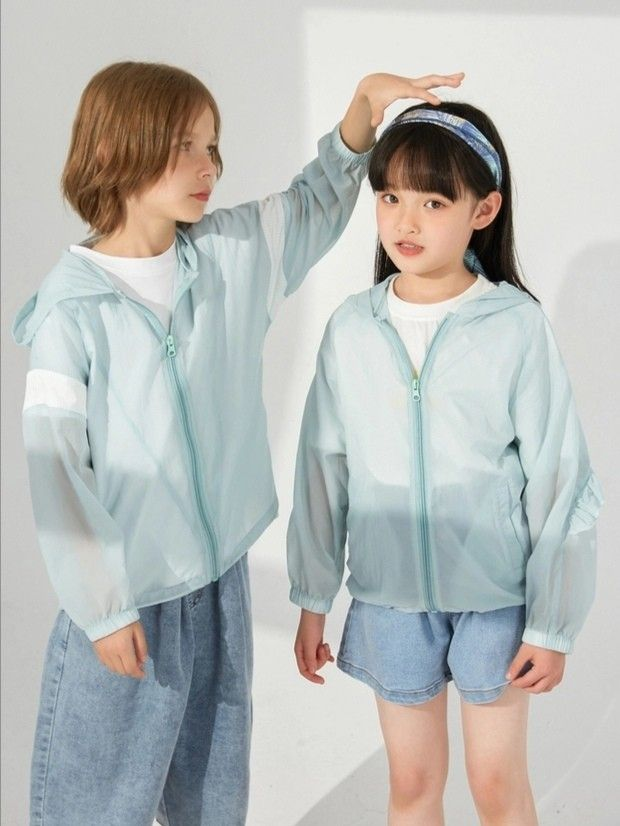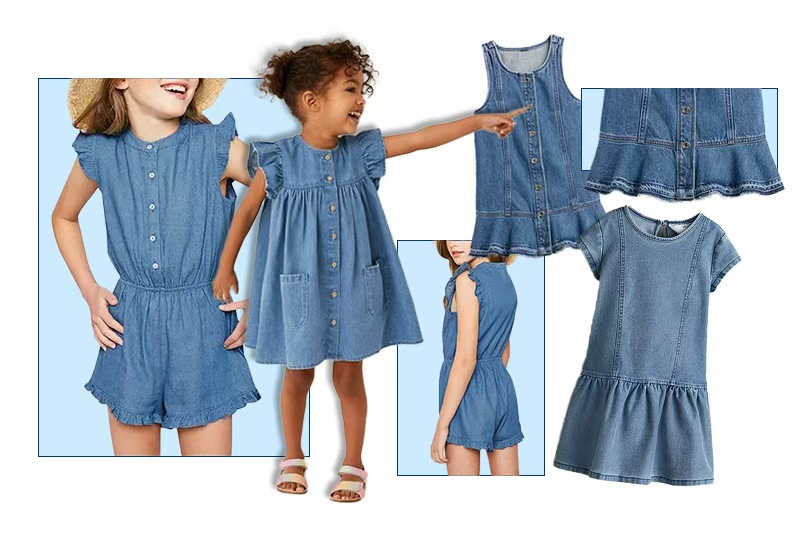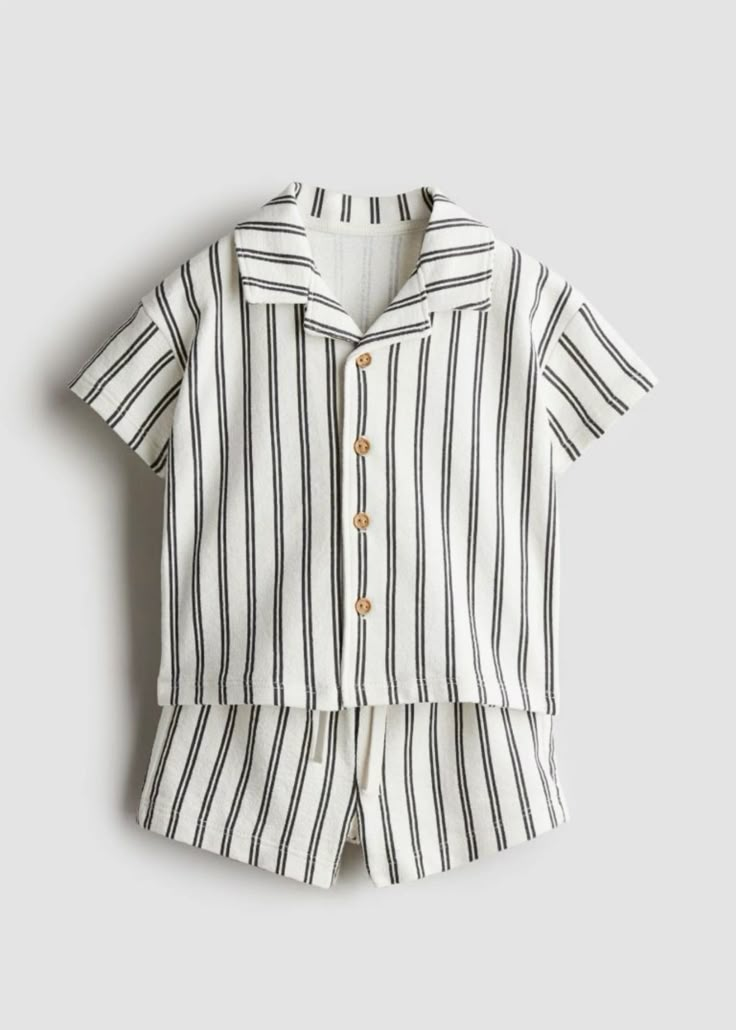Designing sun-protective clothing for kids isn’t just a trend—it’s a responsibility. With growing awareness of UV risks, parents now expect more than cute outfits. They want real protection, especially when kids are out climbing trees, digging in sand, or biking in the midday sun.
To design effective children’s sun protection clothing, focus on UV-blocking fabrics like nylon-spandex blends, strategic garment coverage (long sleeves, high collars), breathability, and certified UPF performance. Prioritize comfort, movement, and child-friendly style while ensuring compliance with global UV safety standards.
Let’s walk through how you can design kids’ sunwear that actually works—without sacrificing comfort or cuteness.
What fabric types are most effective for UV protection in kids' clothing?
Choosing the right fabric is the foundation of any sun-safe garment.
Nylon and polyester blends with spandex are ideal for sun-protective kidswear. These fabrics offer a tight weave, moisture-wicking properties, and hold UPF 50+ ratings when properly treated or constructed. Natural fibers like untreated cotton are less effective unless specially coated.
Stretch matters too. Spandex allows for snug but comfy fits that don’t shift or expose skin when kids are active.
How does garment coverage—like long sleeves and high necklines—impact sun safety?
It’s simple math: the more skin covered, the less chance of sunburn.
Long sleeves, high collars, and full-length leggings offer greater protection by physically blocking sunlight. These design elements are especially important on areas like the shoulders, neck, and upper arms that burn easily.
Even better? Flat seams and tag-free necklines so kids won’t complain or try to strip it off mid-play.
Should the design prioritize breathability along with sun protection?
Yes—and especially for summer wear.
Fabrics must balance protection with breathability. Lightweight yet tightly-woven synthetics like micro-mesh polyester or treated nylon allow airflow while still blocking UV rays. Look for designs with ventilation zones, loose cuts, and moisture-wicking technology.
Otherwise, you’ll get overheated kids tugging at their sleeves and begging to take their sunshirts off.
How can style and functionality be balanced to keep kids comfortable and protected?
Let’s be honest—if kids don’t like how it looks, they won’t wear it.
Stylish yet sun-smart designs include fun prints, bright colors (which can improve UV resistance), and playful details like ruffles, zippers, or hoods. Function should never compromise form—designs must allow movement and feel soft against skin.
Tip: Add thumb holes to sleeves or built-in hand covers for extra sun defense—and kids love them because they feel “cool.”
Are there special certifications or tests needed for sun-protective kidswear?
Yes—labels like “UPF 50+” aren’t just marketing fluff.
Sun-protective clothing should meet global standards such as AS/NZS 4399 (Australia), AATCC 183 (USA), or EN 13758-2 (Europe). These certify UPF performance under real-world wear and wash conditions. Brands should request lab-tested proof for fabrics and finished garments.
Don’t trust a fabric’s color or thickness alone—certification gives buyers confidence and protects your brand.
What services can Taian Lianchuang Textile Co., Ltd. provide for children’s sun protection clothing?
We’re here to make this easy—and safe—for your brand.
At Taian Lianchuang Textile Co., Ltd., we specialize in custom kidswear production with UPF-certified fabrics. From nylon-spandex blends to breathable UV-blocking mesh, we help you build protective, stylish, and practical garments. We offer small MOQs, fast prototyping, digital printing, and performance testing to support your collection.
Need something specific? We offer sourcing support, anti-yellowing finishes, anti-snag fabric options, and compliance reports. Let’s keep your young customers safe—and keep your launch on schedule.
Dive Deeper: What Goes Into Designing Truly Protective Yet Comfortable Kids’ Sunwear?
We all know kids have opinions. One scratchy collar, one sleeve that’s “too tight,” and it’s over. That’s why designing sunwear for them takes more than just fabric knowledge—it takes empathy.
The Real-World Design Balancing Act
Here’s what you’re up against:
- Parents want maximum UV protection and safety certifications.
- Kids want something fun, soft, and not sweaty.
- Your brand wants to manage costs, fit quality standards, and still offer variety.
Let’s tackle how to meet all three.
Choosing the Right Fabric
A lot of us instinctively reach for cotton. It’s soft, right? But cotton, especially untreated, absorbs UV instead of blocking it—and when wet, it performs worse. Nylon-spandex or polyester blends provide:
- High UPF potential
- Quick-dry ability
- Lightweight comfort
To make it breathable, go with microfibers or mesh zones.
Design Details That Matter
Think like a parent and a kid. Add:
- High collars that protect the neck
- Raglan sleeves for shoulder comfort
- Soft bindings instead of stiff hems
- Flatlock seams to avoid itchiness
- Room to grow—size flexibility matters!
You can even build in extendable cuffs, reversible prints, or zip guards for added ease.
| Design Feature | Why It Matters |
|---|---|
| Long sleeves & collars | More UV coverage |
| Thumb holes | Keeps sleeves down, protects hands |
| 4-way stretch fabric | Freedom to move & easy dressing |
| Soft necklines | Prevents irritation & better fit |
| Bright/dark prints | Improves UV reflection or absorption |
Don’t Forget Style
There’s no reason sunwear has to be boring. I’ve seen swim shirts with sea monsters, rainbows, flamingos—even space pizza! Make kids want to wear them.
Consider:
- Matching sets
- Hats with flaps
- Reversible tops
- Gender-neutral palettes
Style builds loyalty. Comfort builds trust. Safety builds your brand’s reputation.
Conclusion
When designing sun protection clothing for children, combine certified fabrics, smart garment design, and playful styling. With the right strategy—and the right manufacturing partner—you’ll deliver sun-safe pieces that kids love to wear and parents love to trust.



